Russian ground combat robots
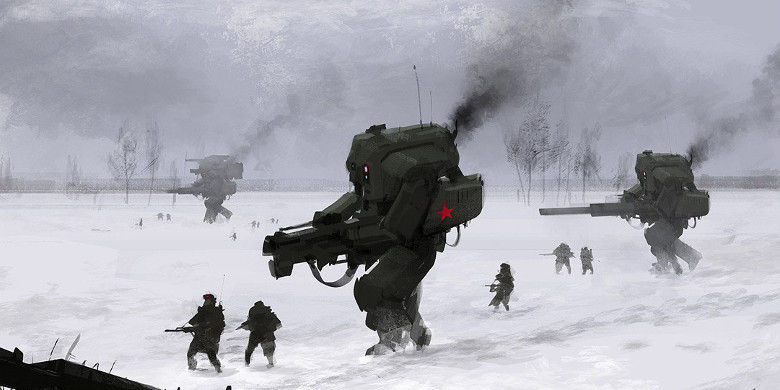
We look forward to when robots begin to actively enter our lives. For example, unmanned vehicles are, in fact, the real robots. And who among us has not dreamed of a mechanical servant in the home?
But many overlook the fact that all of the most advanced technologies humanity first introduces and rolls in the same industry - the war industry. The robots will most certainly be the same: the most advanced designs will first of all appear in the armies of different countries, and then penetrate the civilian sector. Actually, this process has been going on for a long time, just the military does not apply to really advanced developments. But the more simple combat robots have become commonplace.
More simple - it is not autonomous, but managed by man. First of all, various drones come to mind, which in Iraq and Afghanistan have become a symbol of Western democracy. Air robots today are the most developed, but in future wars land robots will also play a big role.
')
Pioneer robots
In our country, experiments with ground combat robotics have been conducted since the 1920s. By the beginning of the war, several dozen teletanks were in service with the Red Army - TT-26 and TU-26. The former were light flame-throwing tanks T-26 with remote control equipment. The operator was in the control tank — TU-26 — and could control the teletank at a distance of 0.5-1.5 kilometers. Teletokank quite successfully used during the Soviet-Finnish war in 1940 to break through the fortified areas.
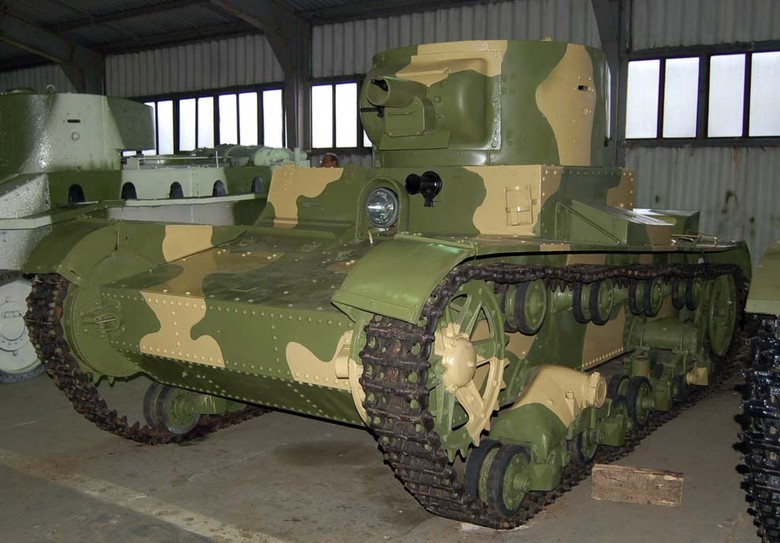
By the way, in the war with Finland, the TT-26 was also used as a self-propelled mine: several hundred kilograms of explosives were loaded onto it, driven to field reinforcement and given a command to undermine. However, the most famous - but also too expensive and ineffective - self-propelled mine was the German " Goliath ": a tiny wedge, controlled by wire; a box of 65–100 kg of dynamite equipped with an electric motor, a battery, and caterpillars.
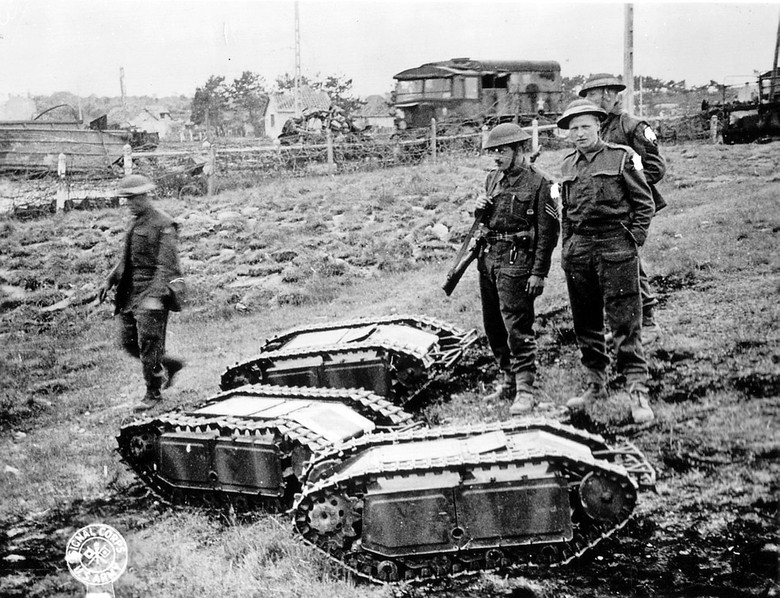
The development of ground-based robots was suspended due to the imperfection and unreliability of the control equipment, the need for visual contact, the inconvenience of control over long distances, the risk of loss of communication due to intersected terrain, and the inefficiency of the radio-controlled tank compared to an ordinary tank. The country had many more important tasks.
Ultra Light Babies
Years later, the USSR returned to the idea of creating radio-controlled robots, but this did not lead to any significant results. Whatever one may say, but using people was both more effective, and simpler, and cheaper. But with the development of technology, the changing vision of future wars, and the need to conduct counterguerrilla warfare in numerous hot spots, ground combat robots became more and more sought-after weapons.
Americans began to build a ski track with their ultra-lightweight robots. Today, they are actively used throughout the Middle East, playing the role of intelligence officers, sappers and self-propelled machine gun points. Such robots are equipped with video cameras, night vision devices, laser range finders, and manipulators for deactivating mines. Infantry machine guns are most often carried as weapons, although anti-tank missile systems, shotguns, and grenade launchers are placed on them.

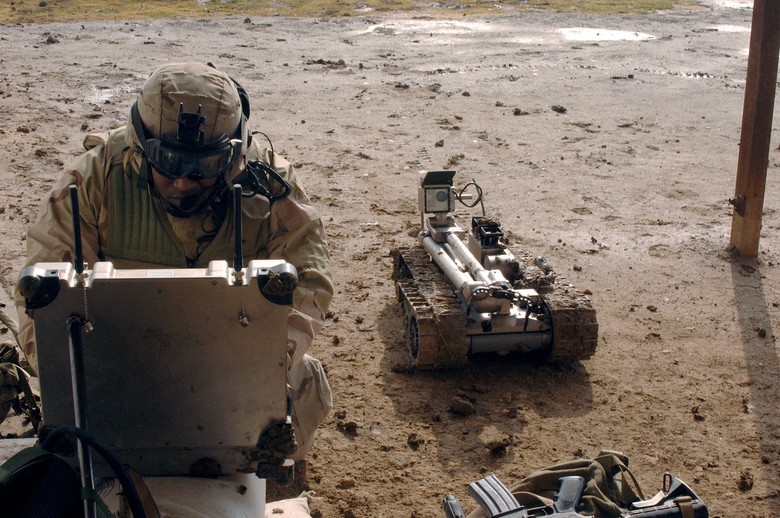
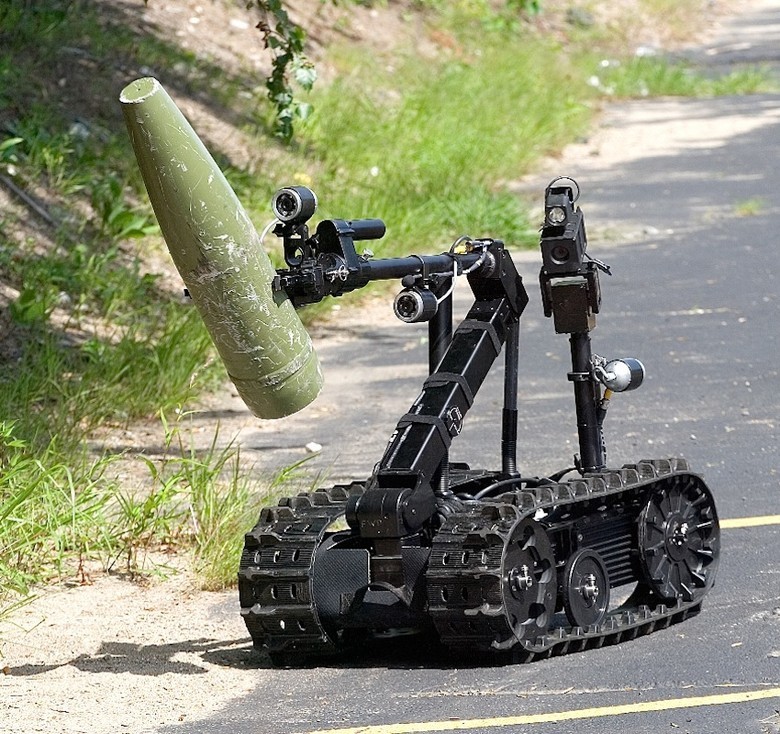

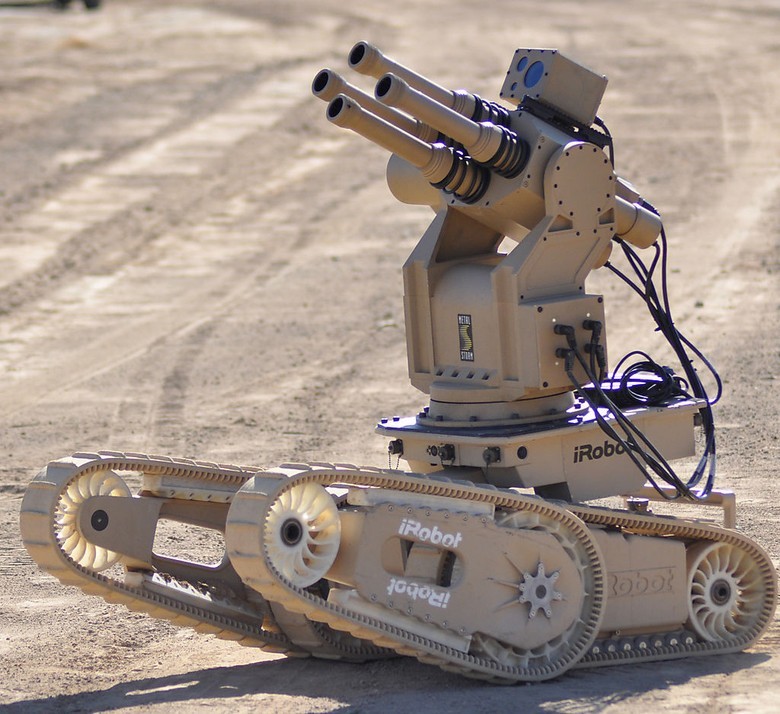
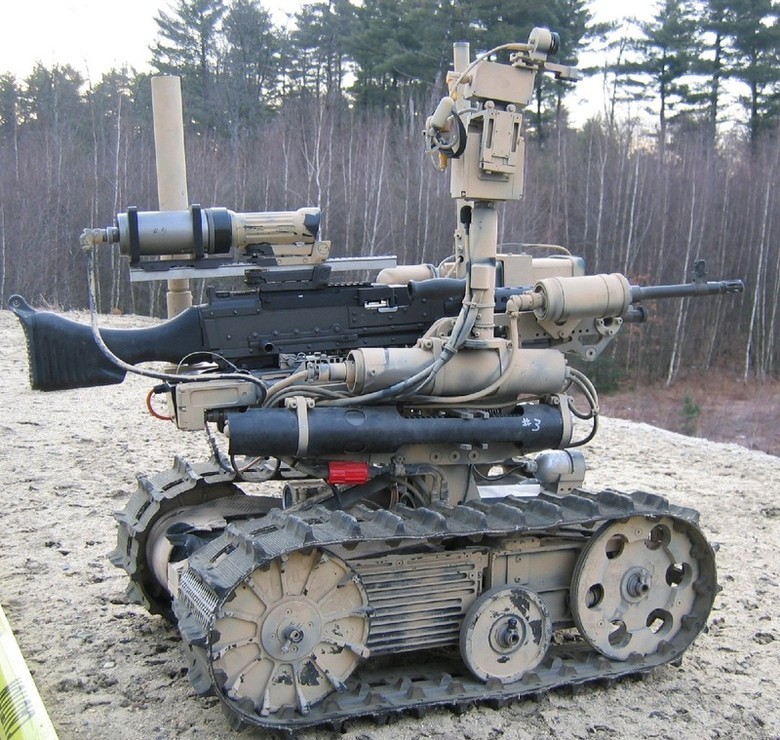

And what of the ultra-light class we have?
Sapper robots
The insectoid name “Bogomol-3” carries a sapper created in the Miass branch of the South Ural State University. The Mantis can reach the mines on the roof of a minibus or under the bottom of a car with a clearance of only 10 cm. Like the Sagittarius, the robot-engineer can climb stairs.
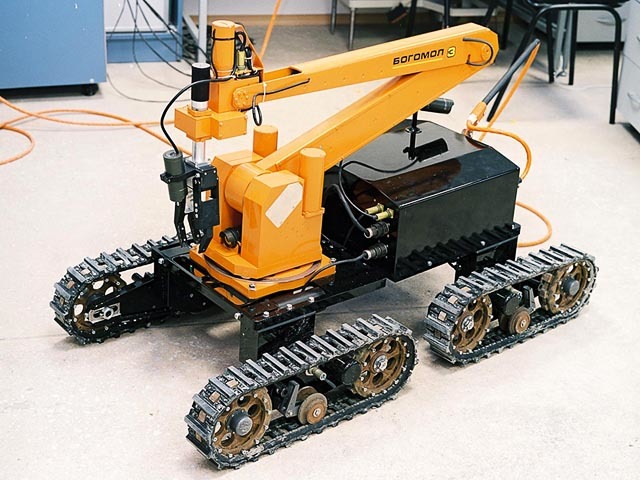
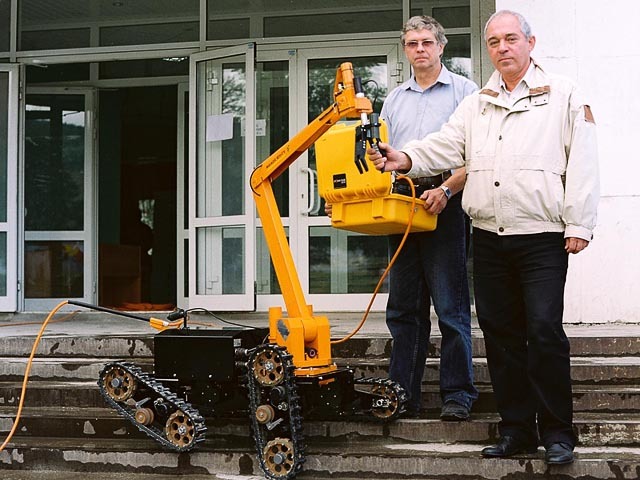
By order of the FSB in MSTU. Bauman was developed and sapper robot "Varan" , which can be used as a scout.

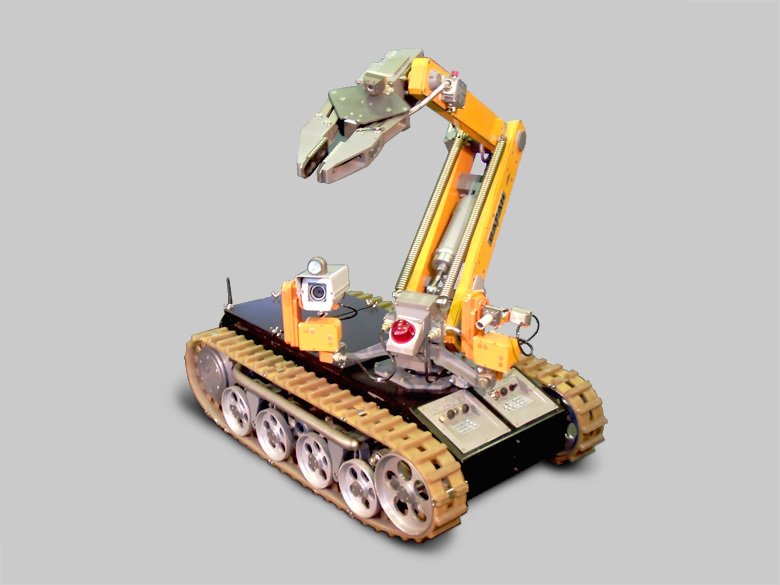
A short video of how the claw manipulator drive works: link .
The wheeled robot sapper "All-terrain vehicle-TM5" , in addition to the manipulator, can carry a water cannon to destroy explosive devices. He is also able to conduct reconnaissance, transport up to 30 kg of cargo, open doors with keys, knock out locks.
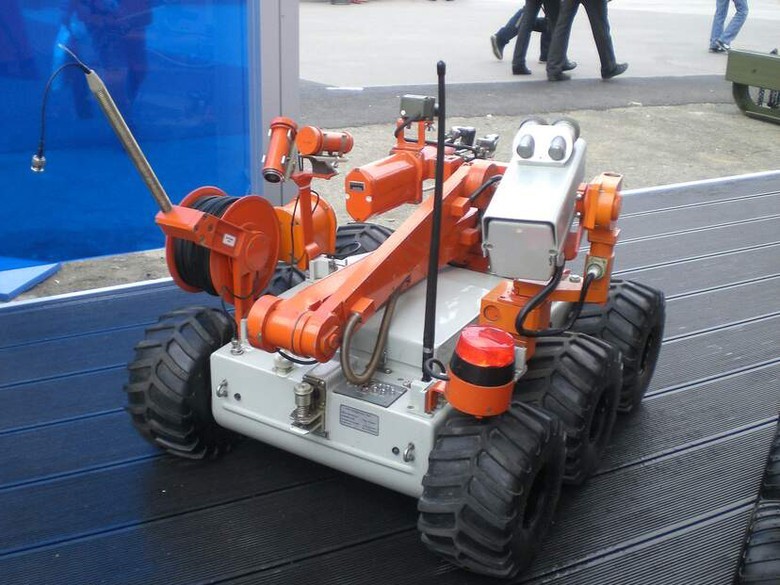
"Cobra-1600" - another domestic robot-engineer capable of overcoming flight of stairs. His tasks are still the same: object manipulation and video surveillance.

In Baumanka, the ICC platform was developed - in fact, a whole family of ultra-light robots for various purposes: combat, sapper, rescue and reconnaissance.
Among them, the most impressive are the MRK-46 and MRK-61 .
MRK-46:
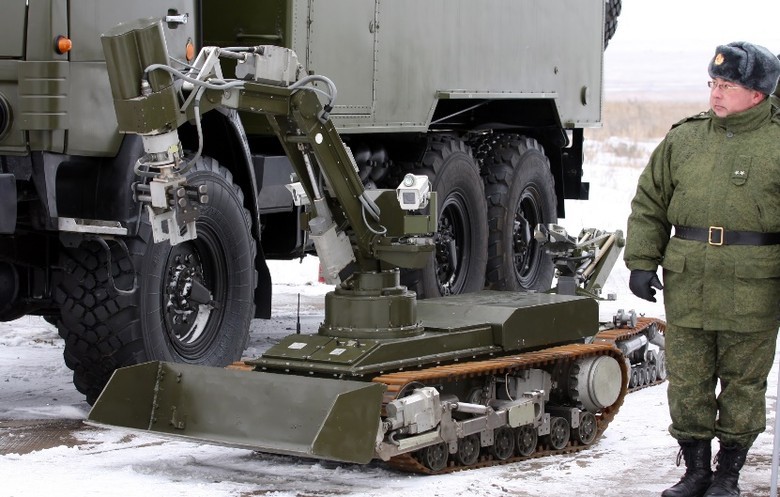
MRK-61:

True, their great-grandfathers "Mobot-Ch-HV" and "Mobot-Ch-HB2" look even more impressive. They were created in 1986 and were intended to work in conditions of high radioactive background: they removed radioactive debris from the roof of the third block of the Chernobyl nuclear power plant.

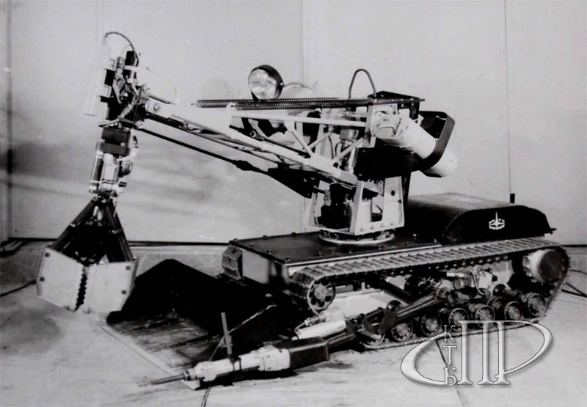
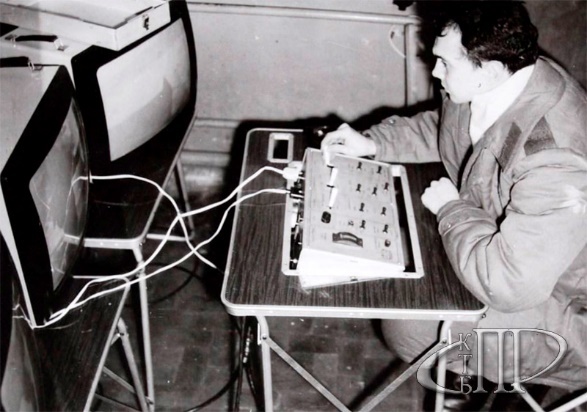
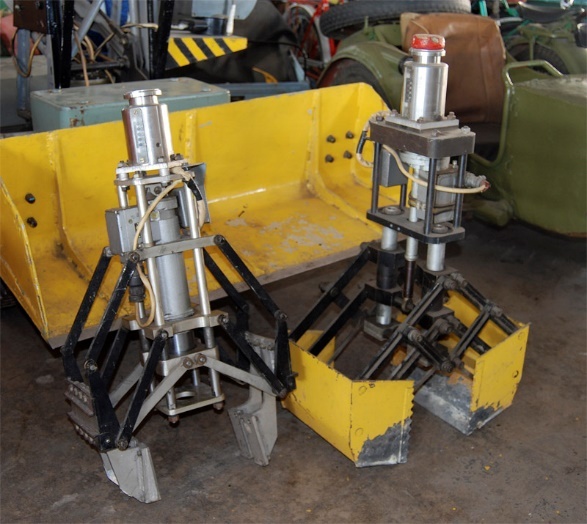
Lethal robots
We turn to ultra-light robots carrying weapons.
Machine-gun robot "Shooter" is intended mainly for urban battles. He is able to climb ladders and assist in the cleaning of buildings. Equipped with three cameras and a Kalashnikov machine gun.
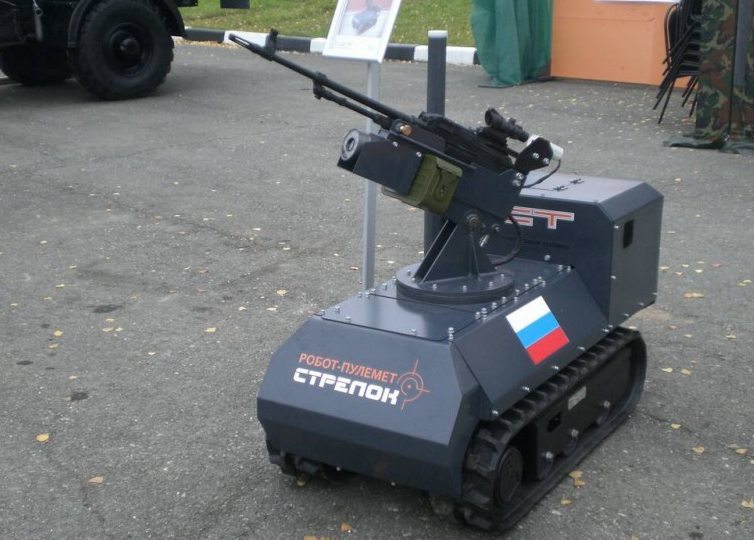
MRK-27-BT. That you did not ram sneezed - a tracked platform the size of a large lawnmower carries with itself two bumblebee jet-throwers, two RShG-2 grenade launchers, a Pecheneg machine gun and smoke grenades. This entire arsenal is quick-detachable, that is, the nearby fighters can borrow their weapons from the robot.

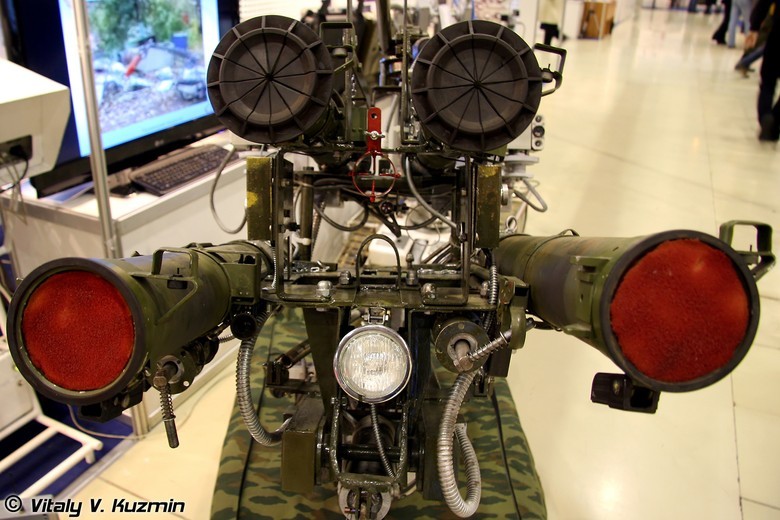

Platform-M
Ultralight fighting robots are a good thing, but they have their own niche. A more or less serious fight is no longer possible for them: the lack of armor and the inability to carry heavier weapons, even a heavy machine gun, seriously limit their capabilities and survivability on the battlefield. Therefore, light-middle-class robots are actively developing in Russia.
First of all, it is “ Platform-M ” . As in the case of the IRAs, this is not a specific type of robot, but a whole family of machines built on the basis of a unified tracked chassis. Depending on the installed equipment, Platforma-M can be a fire support vehicle, a scout, a patrol officer, and a sapper.
The weight of the robot is up to 800 kg, the payload is up to 300 kg, the radius of action is up to 1.5 km.
Armament: Kalashnikov machine gun, grenade launcher, ATGM. The reservation protects the robot from small arms and small fragments. Platform-M is equipped with two 6.5 kW electric motors, the maximum speed is 12 km / h. Batteries last for 6-10 hours of movement.


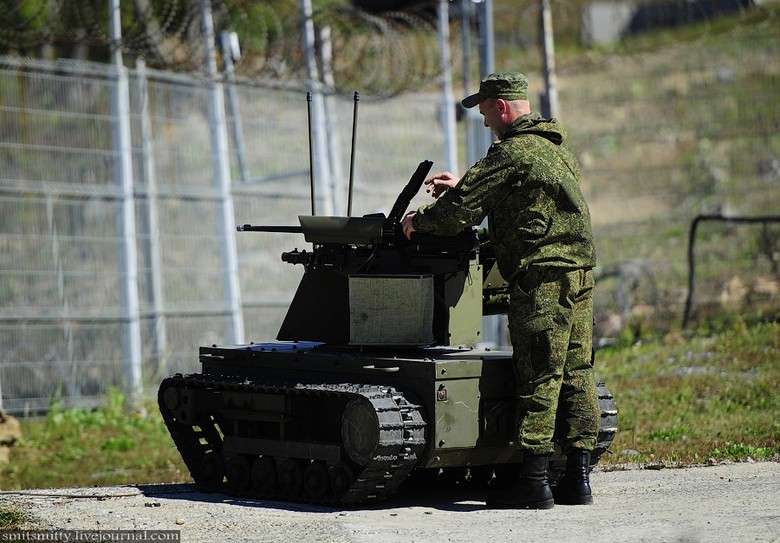
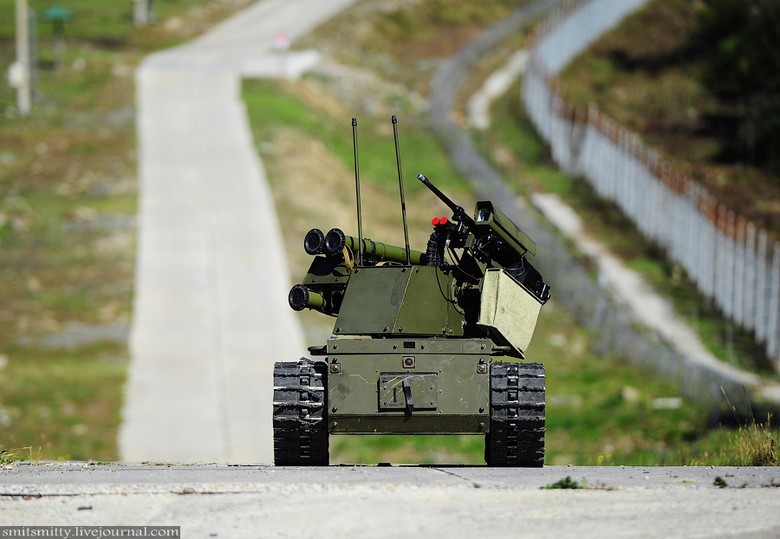
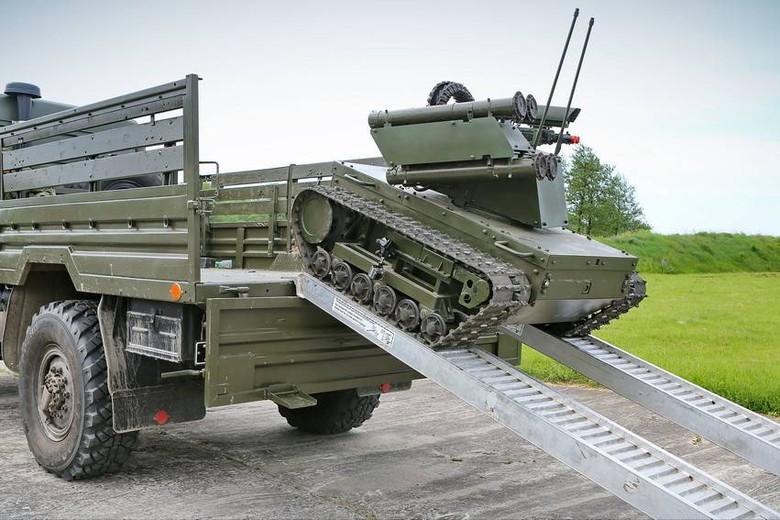
"Wolf-2"
The robot belongs to the middle class. " Wolf-2 " was developed at the Izhevsk Radio Factory. This is a 980 kg robot driven by a gasoline engine. The maximum speed is 45 km / h, the range is up to 5 km.
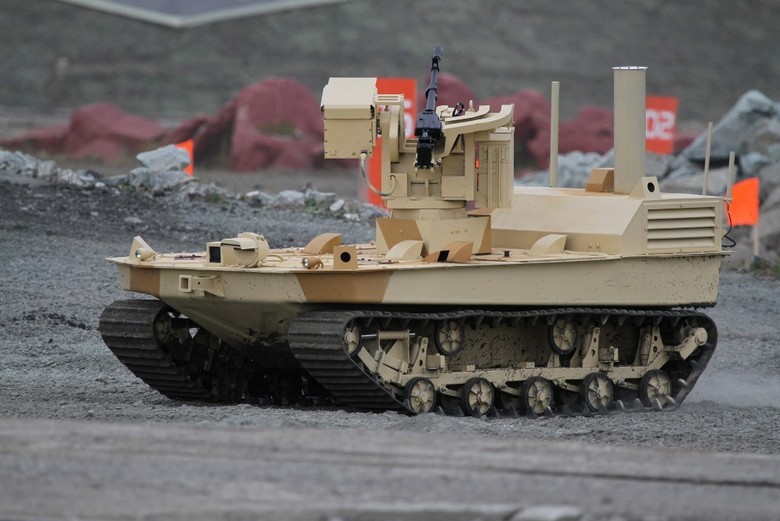
Options weapons:
"Wolf-2" is equipped with a laser rangefinder, gyrostabilizer weapons platform, a thermal imager and a ballistic computer. A robot can capture and drive a target, open fire on it both from the spot and in motion. There is information that the Wolf-2 will be used to protect the strategic Yars and Topol-M missile systems.
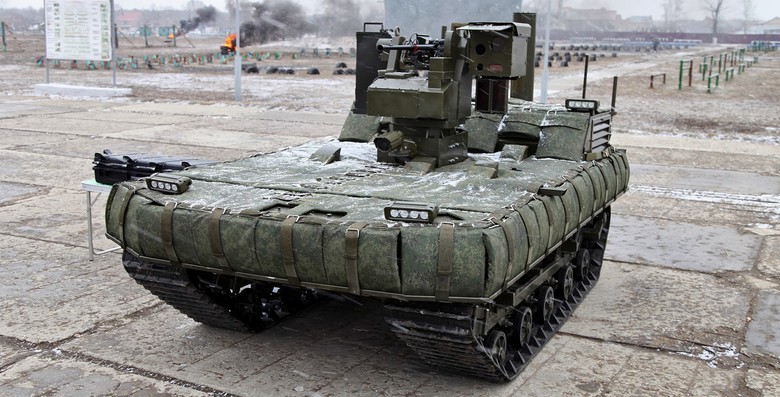
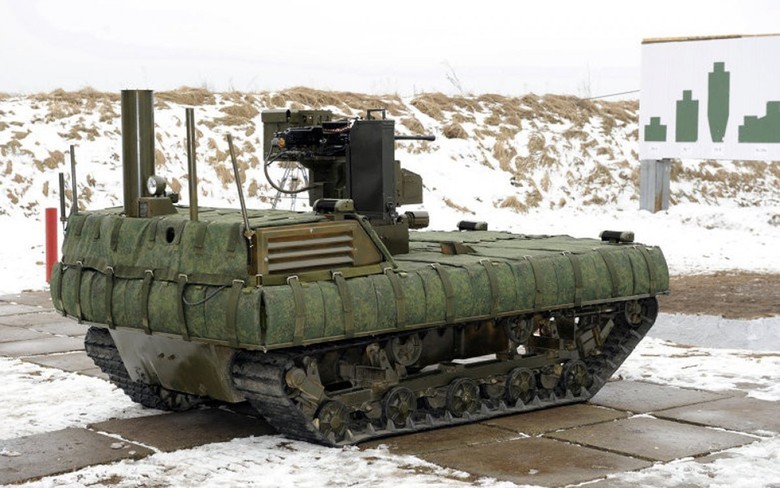
"Nerekhta"
Foundation for Advanced Studies and Plant them. Degtyarev in Kovrov developed a robotic platform "Nerekhta." Tracked chassis weighing about 1 ton can be equipped with both weapons and reconnaissance equipment. Nerekhta can even play the role of a conveyor.
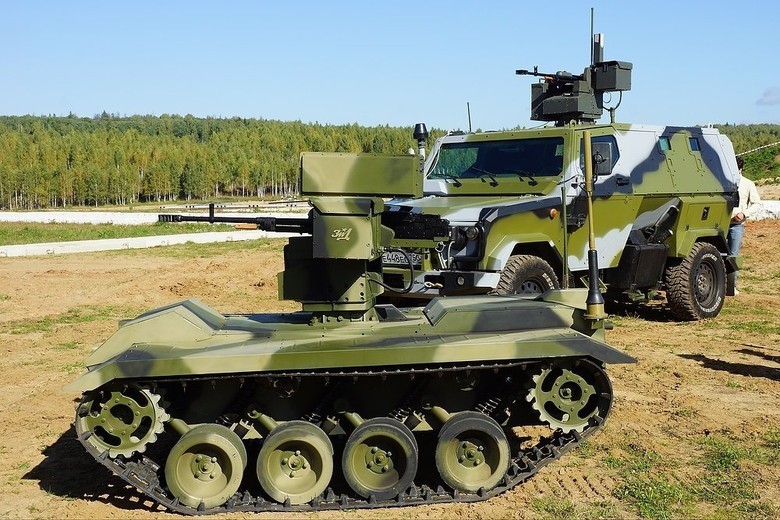

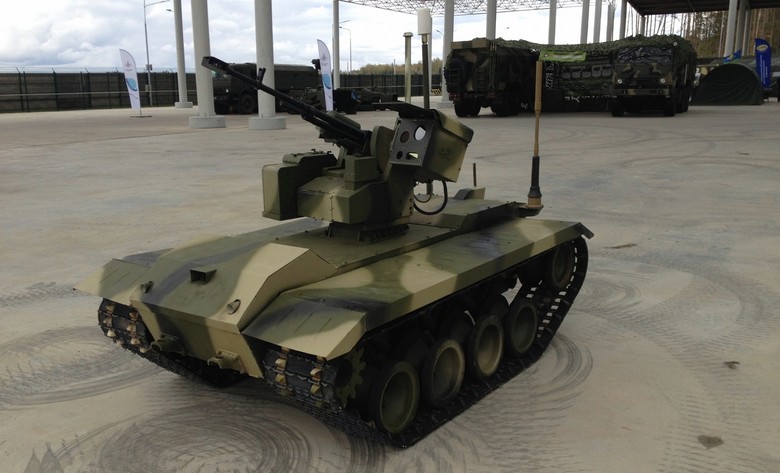

There is a variant of the optical-electronic suppression machine: a robot at a distance of up to 5 km is able to detect optical means (sights, laser designators, cameras) and, having reached 2 km, to blind them with a 4 MW laser pulse.
Intelligence and artillery targeting machine:
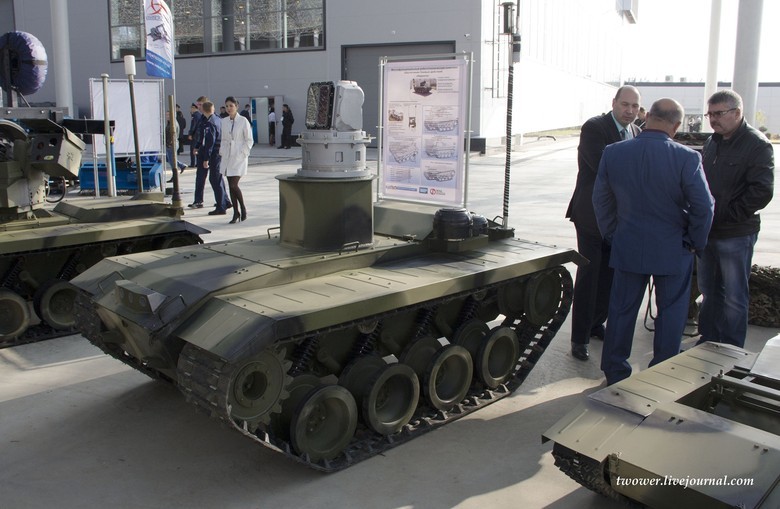
The power plant hybrid - diesel + electric motors. The diesel engine also charges the batteries, and if necessary, Nerekhta can travel up to 20 km only on electric traction. Maximum speed - 32 km / h.
Weapon options: Kalashnikov machine gun, Kord heavy machine gun.
And now the robot "Nerekhta-2" with AI elements and a new type of ammunition for hitting hidden targets should appear .
"Companion"
One of our most recent developments in the field of combat robots. "Companion" developed concern "Kalashnikov" and belongs to the middle class. Able to carry out tasks for reconnaissance, patrolling, lining. "Companion" can act in conjunction with the drone. The maximum target detection range is 2.5 km.
The total weight of the machine with all the bells and whistles can reach 7 tons. The maximum speed is 40 km / h, the range is up to 10 km.
Armament: Kalashnikov machine gun, heavy machine gun, AG-17A grenade launcher, up to eight Kornet-E ATGM.
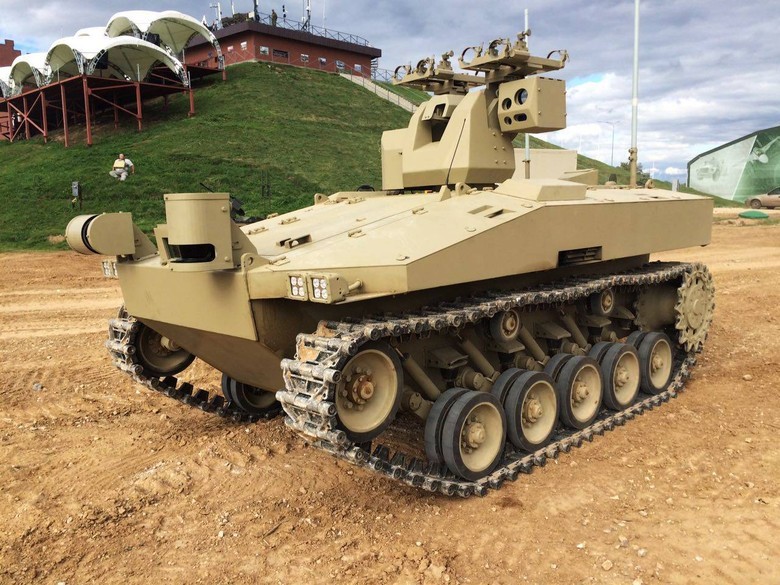
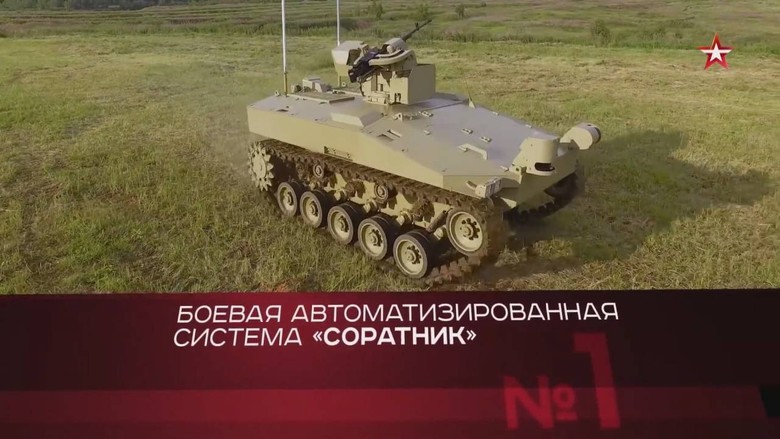
This robot appeared in a fresh program about the actions of the Special Forces fighters in Syria (5:20):
Family "Uranus"
The ten-ton “Uran-9” is armed according to the principle “you cannot spoil butter porridge”:
- 30 mm automatic gun 2A72 (installed on the BMP-2)
- Kalashnikov machine gun
- ATGM “ Attack ” (or “ Igla ” MANPADS)
- Bumblebee flamethrowers

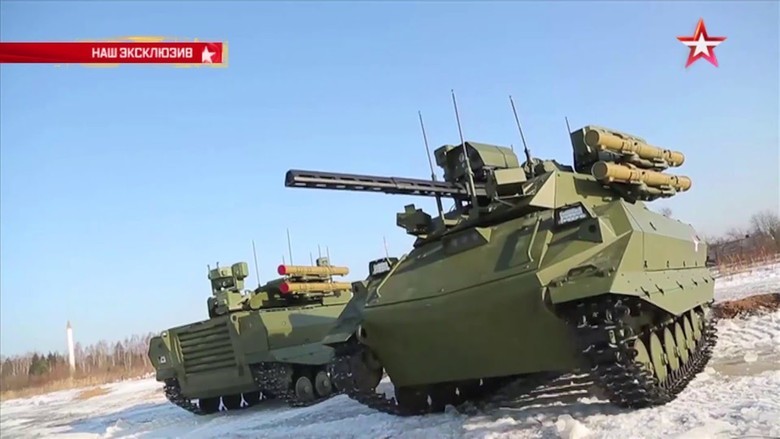

The robot is equipped with everything necessary for the timely detection and destruction of the enemy: a laser range finder, a thermal imager, a warning system for laser irradiation, a smoke screen installation system.
The range is up to 8 km.
"Uranium-6" is an engineering sapper robot. It can be equipped with a bulldozer blade, punching, milling or roller trawls for mine clearance. This is especially true for cleaning up areas where combat operations used to take place, after which many mines and unexploded ordnance remain. Able to withstand an explosion of up to 60 kg of TNT. Moreover, "Uranus-6" is not just stupidly rolling in the hope of causing detonation: it has equipment installed that allows you to determine the types of explosive devices - mines, shells, bombs.
Mass - 6 tons, radius of action - up to 1 km.
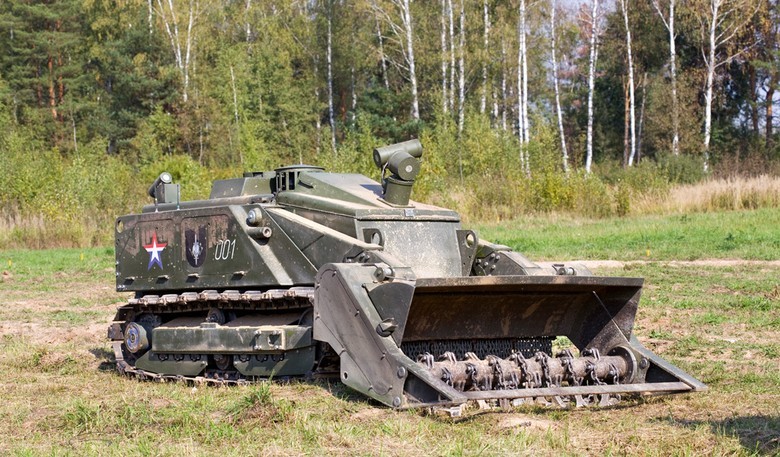
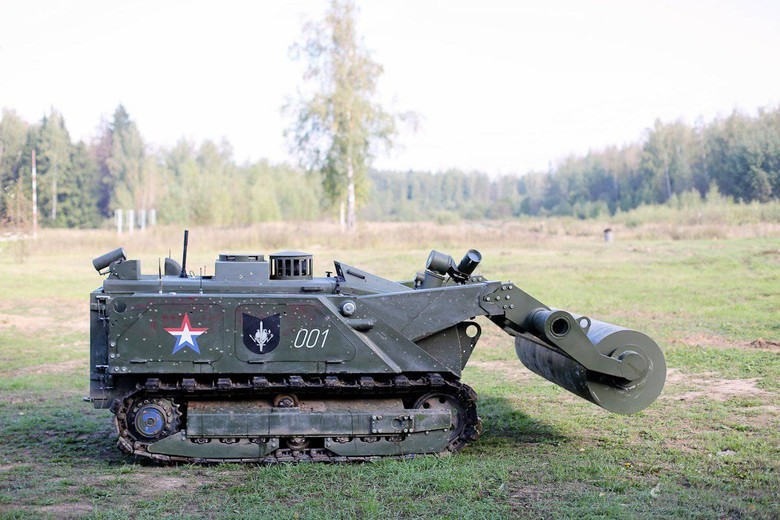

"Uranium-14" - the largest and heaviest of the "Uranus ". True, its purpose is not combat, this machine was created to extinguish fires. But if necessary, it can also be used for clearing blockages and barricades in combat zones. "Uranium-14" is equipped with a fire pump, a water tank and a foaming agent.
Engine capacity - 240 liters. with., weight - 14 tons, maximum speed - 12 km / h.
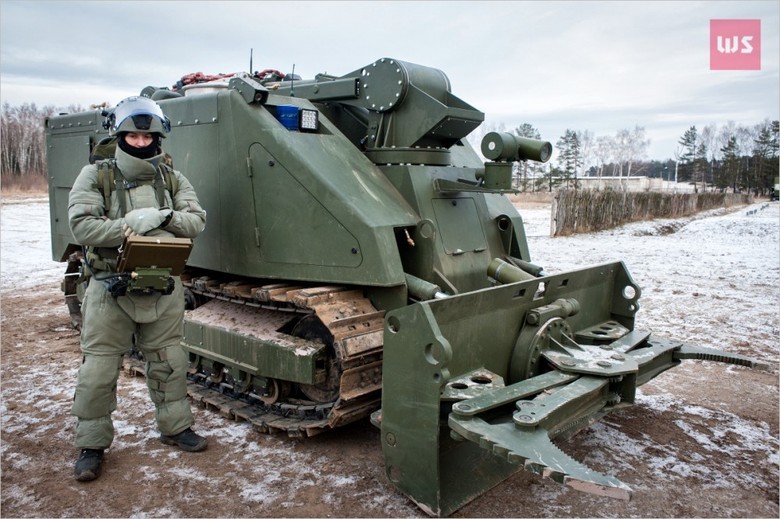
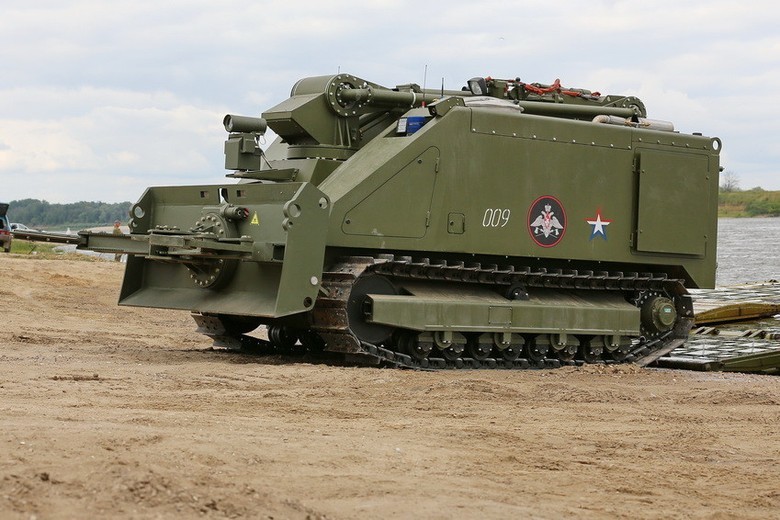
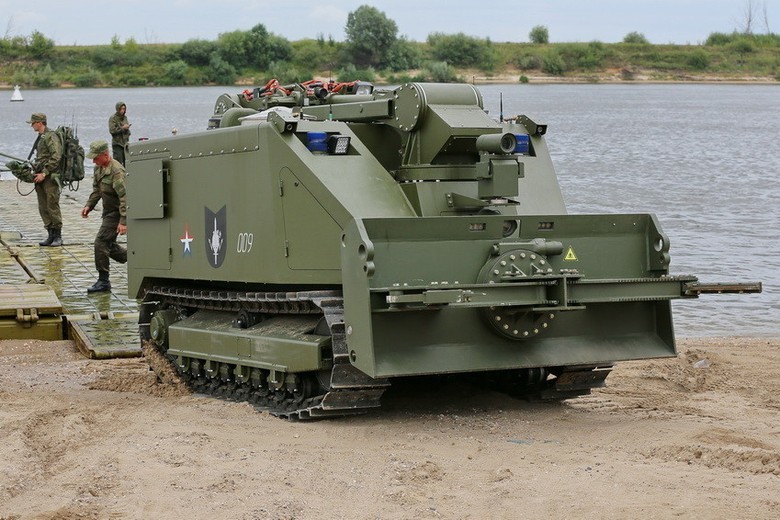
Surely this is not a complete list of Russian developments. But then she and the army - the military is trying not to advertise their new products. All the above-described robots are controlled by humans, but there is no doubt that the development of artificial intelligence will lead to the emergence of fully autonomous machines, which people will need only for maintenance.
By the way, the T-14 “Armata” tank, as far as is known , can be completely remotely controlled in the future, which means it will become a combat robot of a super heavy class. And if it is equipped with AI, then it remains only to say "oh."
Source: https://habr.com/ru/post/400115/
All Articles